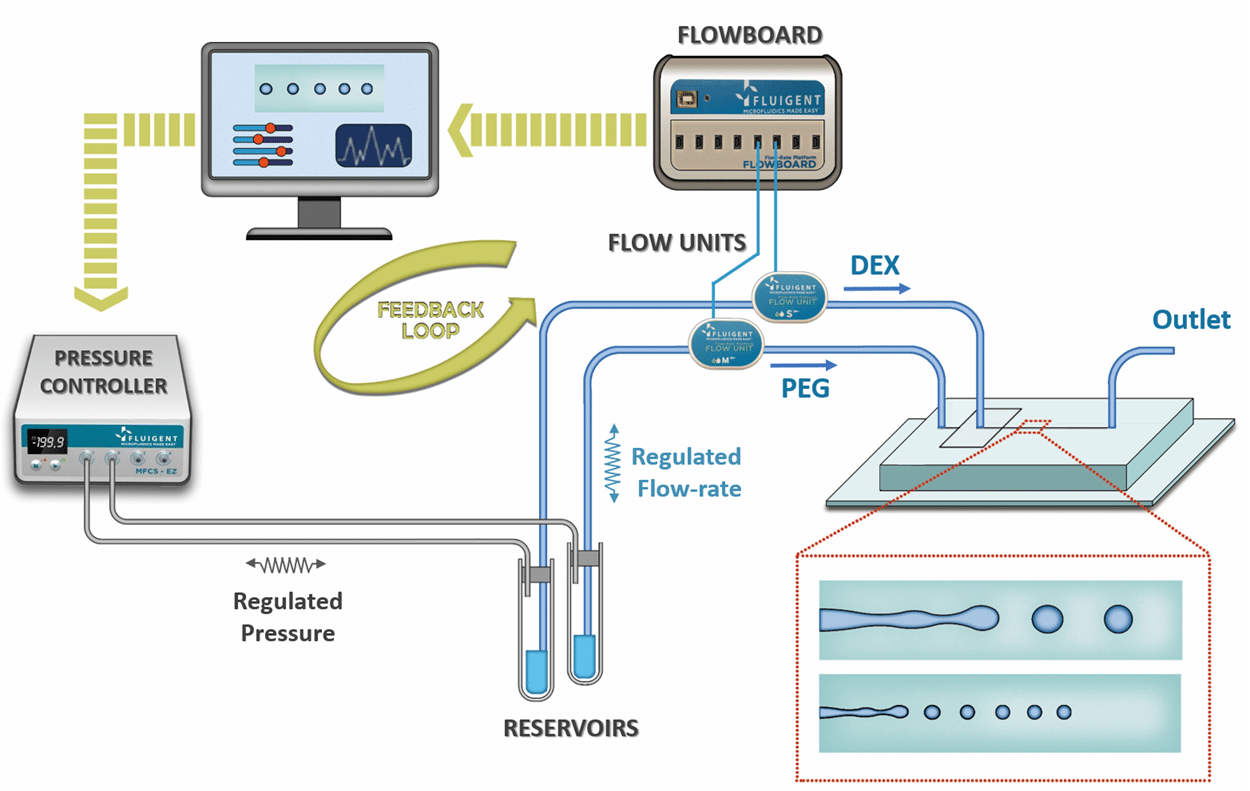Microbead-based microfluidics (droplet-based microfluidic using specific gel as dispersed phase) is a powerful technic which…

Publication from South Korea on liquid crystal double emulsion
pH-Responsive liquid crystal double emulsion droplets prepared using microfluidics
By Jung-Yeon Kwon, Mashooq Khan, Soo-Young Park, from the Departmnet of Polymer Science & Engineering in Daegu.
“Functionalized nematic liquid crystal (NLC) double emulsion droplets (DEDs) with different anchoring conditions on the inner and outer NLC surfaces were produced using a microfluidic method that employed glass capillaries with a combined co-flow and flow-focusing geometry. Planar (P) and homeotropic (H) NLC DED configurations were achieved using poly(vinyl alcohol) (PVA) and a mixture of sodium dodecyl sulfate (SDS)/polysorbate 80 (TWEEN 80), respectively. The H configuration was not stable using SDS alone, and required the use of a mixture of SDS and TWEEN 80. The P/P, P/H, H/P, and H/H configurations on the inner/outer surfaces exhibited different defect structures, as predicted by the Poincaré theorem. The transition from the P to H configuration on the outer surface was monitored by replacing the PVA aqueous solution (used to give initial P configurations on both the inner and outer surfaces) with the aqueous SDS/TWEEN 80 solution. The defect structures located on top of the NLC DED had a total defect strength of 2 and the defects were positioned at opposite poles during the P-to-H transition. The outer configuration of the poly(acrylic acid) (PAA)-coated NLC DED (NLC DEDPAA) was pH-responsive, with P and H configurations observed below and above the pKa of PAA, respectively. In addition, NLC DEDPAA was utilized for glucose detection by monitoring changes in the defect structures, which were brought about by a decrease in pH during an enzymatic reaction of glucose. A systematic study on the defect structure in NLC DEDs is of paramount importance for the liquid crystal field. In this work, we report a method of preparing pH-responsive NLC DEDs, which can be used as a new biosensor platform by detecting these unique defect structure.”
These experiments were made possible with the use our pressure-driven flow controller pump.
For more information, doi:10.1039/C6RA03951C or RSC Adv., 2016,6, 55976-55983.



